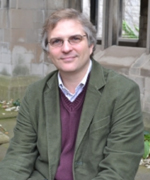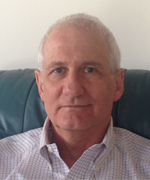Unique Registers and Specialized Terminology: Sanskrit and the Tibetan Language in Translation
Art Engle has translated both Vasubandhu’s Pañcaskandhaprakarana (ཕུང་པོ་ལྔའི་རབ་ཏུ་བྱེད་པ་) with Stiramathi’s commentary and Asaṅga’s Bodhisattvabhūmi (བྱང་ཆུབ་སེམས་དཔའི་ས་). Over the course of many years of close textual study and Buddhist practice his insights into the translation of Sanskrit and Tibetan texts will be of interest to a great number of those translators faced with issues arising from translating Tibetan texts that are themselves translations of older Indian texts. Similarly, Christian Wedemeyer has translated Āryadeva’s Caryāmelāpakapradīpa (སྤྱོད་པ་བསྡུས་པའི་སྒྲོན་མ་) and annotated translations of short works on the Guhyasamāja, including sādhanas and instructional works by Nāgārjuna, Āryadeva, Nāgabodhi, Candrakīrti, and others. His recent work on these texts has led him to question how terms come to mean particular things for different communities and he will explore some of the related theoretical issues in this session.
Event: TT Conference 2017 – Translator's Craft Session
Date: June 2, 2017 – 2:30 pm
Speakers: Art Engle, Christian Wedemeyer
Topics: Sanskrit Language, Terminology, Tibetan Language, Translation

Christian Wedemeyer
University of Chicago
Christian K. Wedemeyer is associate professor of the history of religions at the University of Chicago Divinity School. He is the author of Making Sense of Tantric Buddhism: History, Semiology, and Transgression in the Indian Traditions (Columbia University Press; winner of the 2013 American Academy of Religion Award for Excellence in the Study of Religion) and Āryadeva’s Lamp That Integrates the Practices (Caryāmelāpakapradīpa): The Gradual Path of Vajrayāna Buddhism According to the Esoteric Community Noble Tradition (AIBS, 2007). He is currently completing another volume of translations: Tantric Practices of the Esoteric Community: Ritual and Exegetical Works of the Noble Tradition.

Art Engle
Tsadra Foundation Fellow
Artemus B. Engle began studying the Tibetan language in Howell, New Jersey in early 1971 at Labsum Shedrup Ling, the precursor of the Tibetan Buddhist Learning Center. In 1972 he became a student of Sera Mey Khensur Lobsang Tharchin Rinpoche, a relationship that spanned more than thirty years. In 1975 he enrolled in the Buddhist Studies program at the University of Wisconsin in Madison and received a PhD in 1983. Since the mid 1980s he taught Tibetan language and Buddhist doctrine at the Mahayana Sutra and Tantra Center in Howell, New Jersey. In 2005 he became a Tsadra Foundation Translation Fellow and has worked primarily on the Pañcaskandhaprakarana and the Bodhisattvabhūmi.
